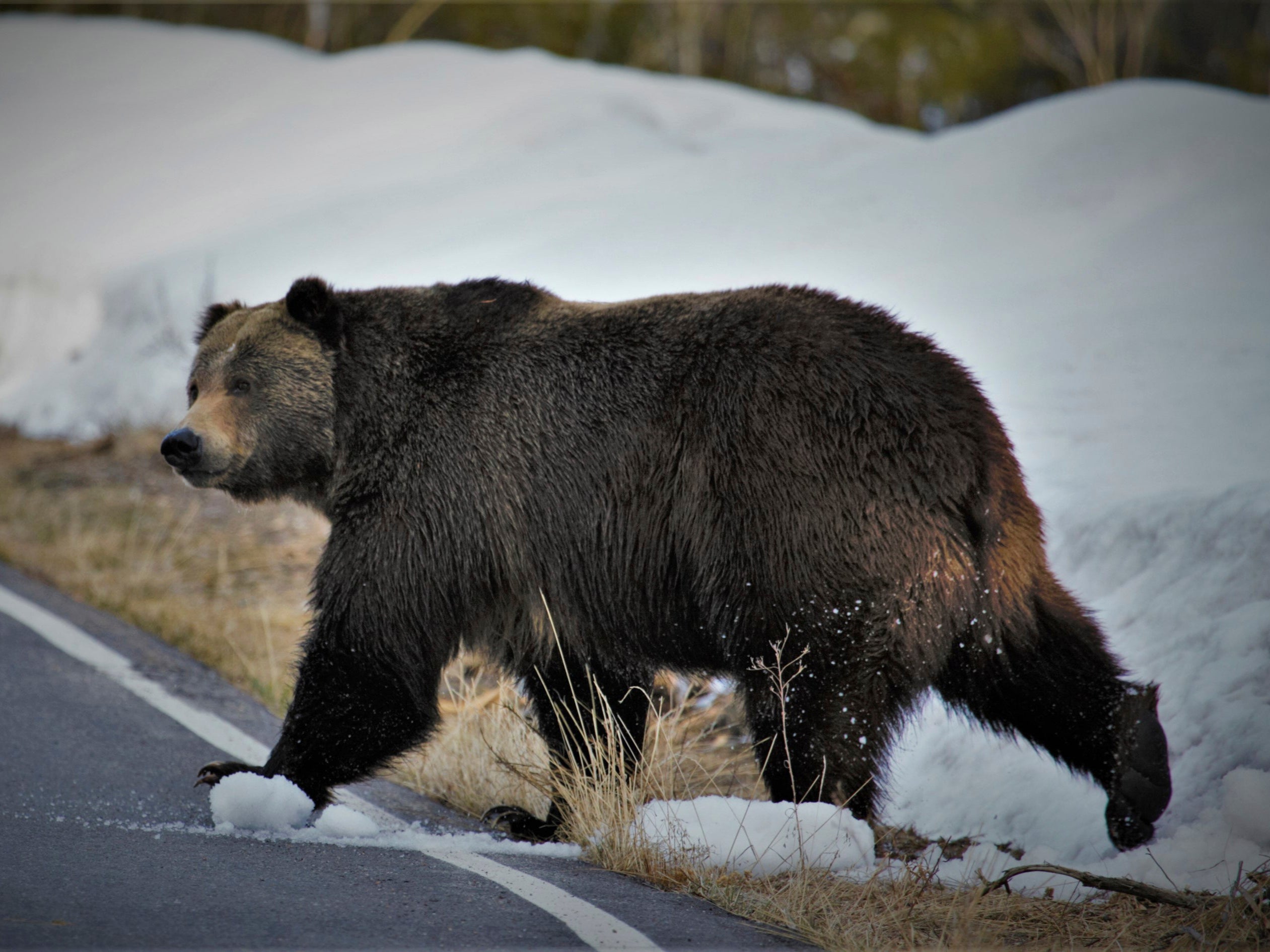Grizzly bears are expanding their roaming grounds meaning they need more protection, new study says
Findings follow the first federal government assessment of North America’s grizzlies for a decade

Your support helps us to tell the story
From reproductive rights to climate change to Big Tech, The Independent is on the ground when the story is developing. Whether it's investigating the financials of Elon Musk's pro-Trump PAC or producing our latest documentary, 'The A Word', which shines a light on the American women fighting for reproductive rights, we know how important it is to parse out the facts from the messaging.
At such a critical moment in US history, we need reporters on the ground. Your donation allows us to keep sending journalists to speak to both sides of the story.
The Independent is trusted by Americans across the entire political spectrum. And unlike many other quality news outlets, we choose not to lock Americans out of our reporting and analysis with paywalls. We believe quality journalism should be available to everyone, paid for by those who can afford it.
Your support makes all the difference.Grizzly bears are reportedly expanding their roaming ground in the US, but scientists say it also means they need more protection.
A study released on Wednesday by the US fish and wildlife service was the first carried out in over a decade on the status of the country’s bears.
It confirmed their increasing territory in parts of the northern Rocky Mountains, but pushed for their continued protection – in part because no other areas would be suitable for them.
Hilary Cooley, the fish and wildlife service's grizzly bear recovery coordinator, said scientists studied a number of areas outside of the Rockies for suitability before making the conclusion.
"They were looking for areas that could sustain grizzly bears as opposed to areas that would continuously need for humans to drop bears in there," said Ms Cooley of the locations, which included the San Juans and the Sierra Nevada.
Read more:
- George Floyd news live: Derek Chauvin trial to resume
- Teacher’s ‘racist zoom rant’ overheard by student’s family after she forgets to end call
- Friend in car with George Floyd will refuse to testify
- Seven-year-old boy charged with rape, report says
- Alabama fails to reverse ban on yoga as conservatives say they fear rise in Hinduism
It follows the revival of the species in the Yellowstone region of Wyoming, Montana and Idaho, where there are thought to be more than 700 bears.
While in the area around Glacier National Park in Montana, there are more than 1,000 of the animals, and a further 200 in Washington state.
The US bear population once stood at about 50,000, before hunting and habitat loss took effect in the early 1990s.
Grizzly bears have been protected as a threatened species in the contiguous US since 1975, from which point their numbers have slowly risen from 2 per cent of their historical figures, to 6 per cent.
While scientists say the bears in the northern Rocky Mountains should face more protections, activists have also called for the reintroduction of the species into other states.
The bears were last seen in California in the 1920s and the last known grizzly in Colorado was killed by an elk hunter in 1979.
The issue came to head in 2019 when the Center for Biological Diversity sued the fish and wildlife service in an effort to force officials to consider actively restoring the population.
A US District judge, however, ruled that the government was not compelled to do so.
Interior secretary Deb Haaland, who oversees the fish and wildlife service, co-sponsored legislation while in Congress to increase protections for bears and reintroduce them on tribal lands.
She declined to say how she would approach the issue when questioned during her February confirmation hearings, and said: "I imagine at the time I was caring about the bears.”
Additional reporting by the Associated Press.
Join our commenting forum
Join thought-provoking conversations, follow other Independent readers and see their replies
Comments